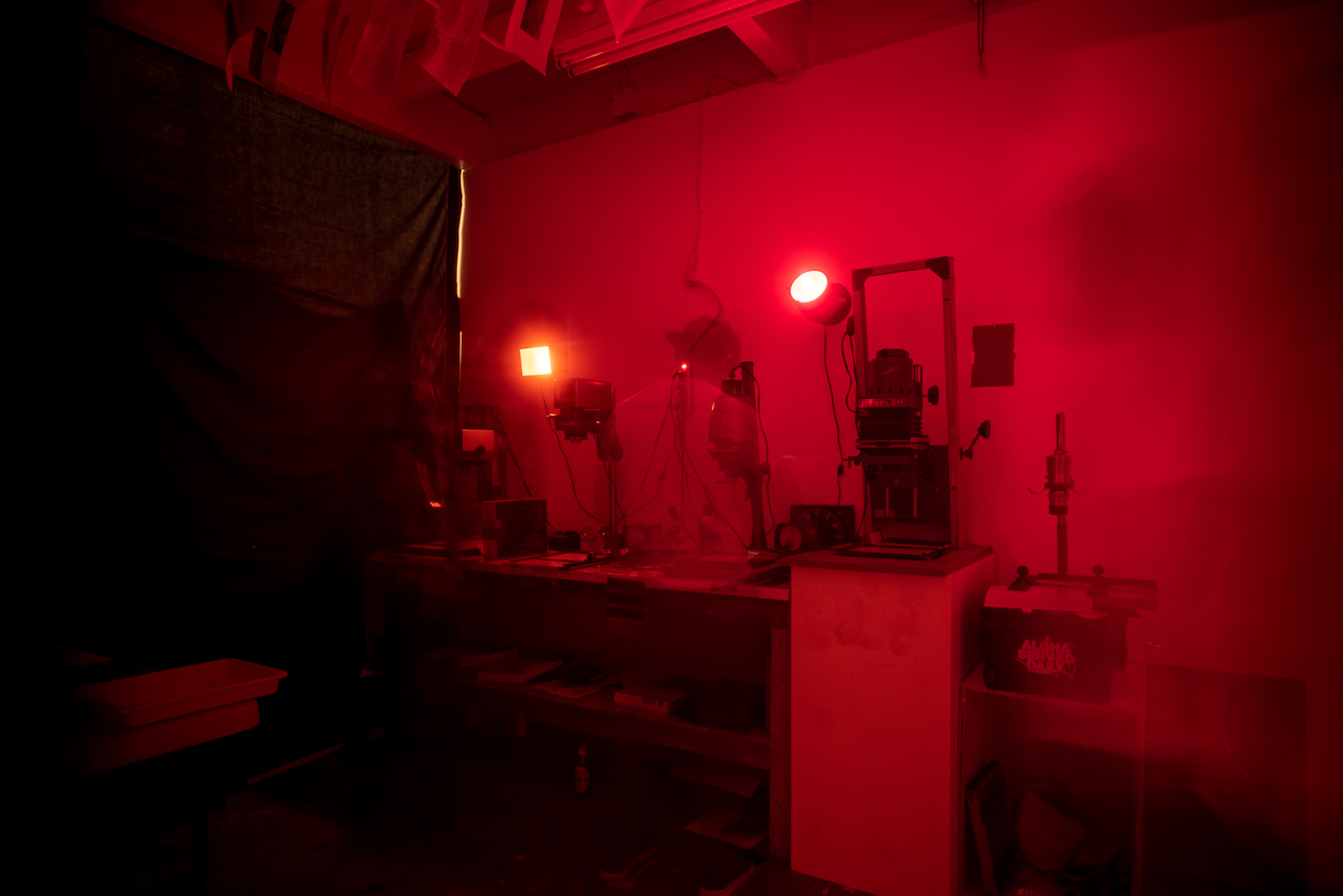Images by Chris Rohrer and courtesy of Analog Sunshine Recorders
For the Analog Sunshine Recorders, a Honolulu photography collective devoted to capturing images the old-fashioned way, film’s legitimacy was never under threat. In 2010, when film labs and darkrooms were being shuttered left and right and it appeared digital technology had finally choked out its photographic predecessor, Analog Sunshine Recorders was beginning to take shape.
The original members of the collective took advantage of the mass exodus from analog to digital to buy top-of-the-line film photography equipment—everything from enlargers to cameras to film itself—for pennies on the dollar. “All this stuff that used to be too expensive to own was getting tossed out,” says Chris Rohrer, one of its founding members. “We were all in the right place at just the right time.”

Other founding members include Natalie Nakasone and Travis Sasaki, but it’s important not to get caught up in who is in and who is out. Analog Sunshine Recorders is intentionally without formalized leadership or direction and has a constantly shifting membership with numbers ranging anywhere from 10 to 100 at any given moment or in any given photography show. It acts like a hive-mind organization that anybody can qualify to join simply by indulging in a love for emulsion. If you can’t help but keep loading rolls of film into that old camera, Analog Sunshine Recorders is for you. If you love to pass countless hours in the darkroom, you’re in. However, the real induction ceremony for incoming members is helping put on or contributing work to one of its many photography exhibits.
Analog Sunshine Recorders’ anonymous collective presence is one of its integral characteristics, and its most unique. Most art shows center around a single artist, while in group shows, the works are often separated by creator. For its shows, the collective combines members’ photos into a single massive work and leaves them void of title cards or labels, making it impossible to discern ownership of one piece from another. In this way, viewers are signaled to focus on the collective work instead of a photo-by-photo experience.
For the collective’s December 2018 event “Tourist,” members pooled together their darkroom resources and transformed Kaka‘ako gallery Aupuni Space into a community darkroom for a week. Anyone could sign up for a slot to print tourism-themed photos in a wet lab for free. The online sign-up sheet was almost immediately full and was eventually disregarded entirely as word got out that there was a place for nocturnal analog weirdos to print their old negatives. For a week, it was a late-night, chemical-soaked haven. Some photographers who had never seen a darkroom were able to learn the process of printing (all the way from exposing a negative to developing to the rinse bath) from more experienced photographers.
By the end of the week, 39 photographers had printed 125 images, which were then mounted in straight rows and columns in the gallery, spreading across the walls from floor to ceiling. There was no room for name tags or title cards, of course. Built into one gallery wall was the very darkroom that the photos were printed in, which Analog Sunshine Recorders decided to leave on display to reintroduce the public to wet-lab photo printing and maybe inspire curiosity in folks who had thought the process a little too intimidating or perhaps too nerdy to give it a chance.
Members of Analog Sunshine Recorders aren’t exactly sure what the collective is all about. It doesn’t have a mission statement or a goal or a hierarchy to decide one. It isn’t for profit, considering money is usually lost on its shows. It’s not even about promoting film as a medium. “You can shoot whatever you want,” one member says, “We just happen to like film.” Oddly enough, when forced to describe what Analog Sunshine Recorders is about—what all the effort and money and late nights amount to—more than a few members answer, “Good times.”



